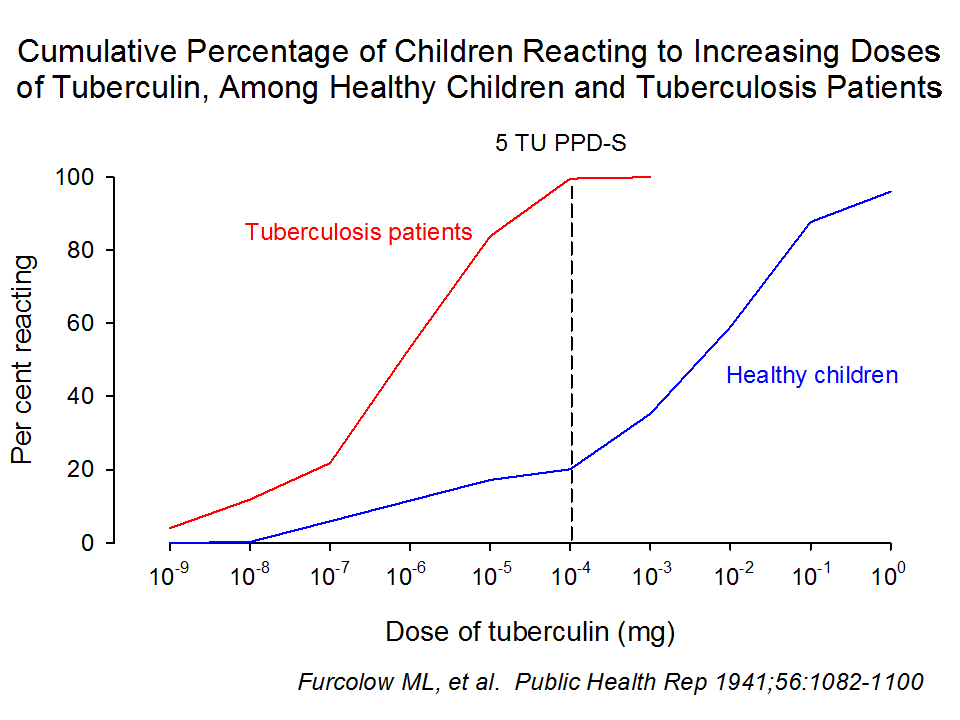 |
|
| |
|
|
| Slide |
028 |
Epidemiologic Basis of Tuberculosis Control |
 |
Next |
 |
 |
Previous |
 |
First |
 |
Last |
The dose of tuberculin that provided the best discrimination between those infected with M. tuberculosis and those not was determined in two groups of persons in the United States.
One group consisted of patients with confirmed pulmonary tuberculosis, but not as seriously ill that they were likely to be anergic to tuberculin. The second group consisted of children from an orphanage in Ohio, who were very unlikely to have ever been infected with M. tuberculosis.
In both groups the proportion who reacted to a given dose increased with increasing dosage of tuberculin. However, the maximum of reactors was achieved at much lower doses among patients than among the children. The discrimination between the two groups was largest with 0.1 micrograms. This concentration was given the specification 5 TU PPD-S.
The curve for children demonstrates that with increasing dosage of tuberculin ultimately all reacted to it, but not because of infection with M. tuberculosis, but because of some non-specific cross-reaction with tuberculin. |
| |
|
Go to top
Last update:
September 10, 2010